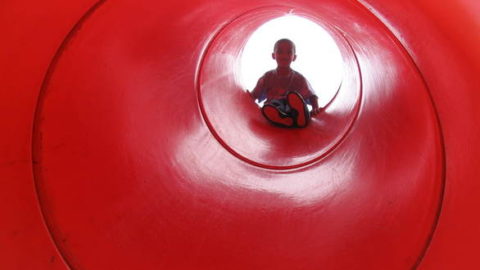Put it simply, cognitive flexibility is about how can we all be less rigid or stuck in our own ways and adapt flexibly to what is demanded in the environment through adjusting with our internal and abstract reasoning abilities.
Listen, every word in the above sentence is reworded from scientific jargon that we aptly hear in daily life such as roll with the punches, go with the flow, adjust, don’t kick fuss, reason and let’s move forward from X, Y, and Z. This applies to us as adults in navigating simple points of difference in relationships, work meetings listening to others’ opinions or while coaching our children.
The scientific explanation for cognitive flexibility was discussed in the podcast https://www.drmanipavuluri.com/explaining-brain/podcast-cognitive-flexibility/. Our brain is the apparatus at our command to accomplish flexibility. Here, my main objective is to give solutions of how to tame inflexibility. Mind you, as I am writing this, I am noticing that I am primed to be even more flexible in my daily life, starting with my husband (dancing to his tune, lucky him, right?!)! Age and stage is no bar to keep practicing. We just have to be aware.
Many angles and approaches to teach flexibility for our children:
- Development: First, know that flexibility develops throughout childhood. I recall at around age 5 I threw a tantrum when my cousin did not smear the bread in a certain way during summer holidays at my aunt’s home. I had a method of how the slice of bread must be buttered without dripping. I did not feel I had to explain or give my reason, and held my cousin responsible for the misstep, all in my mind which became worse as she was withdrawing my reward, my new frock a local tailor made for me as a gift for the visit. I also remember being upset at age 7 when my Dad held the pencil differently than my teacher while sharpening the point and did not teach me the math problem in exactly the way my teacher did. Understand that such occasional fuss is developmentally normal, may be willful, and flexibility develops with age and things change. That said, it can also be delayed and leads to problems and can be taught.
- Verbalize the detail of ‘how you do it’ as you model your frustrations and how you adjust. Example: Drop in the conversation how you adapt to change and be flexible. Help children understand that adjustment is necessary at times. Help them to learn through phrases like ‘It is not the end of the world if something goes wrong. Give it time.’
- Three steps in a sequence to influence: Meet them where they are at-put a positive spin to it- and offer a vision to climb out-and do even better. Example: (1) Look at what is positive in persisting with the current task, (2) empathize, and (3) suggest or say how it can be amazing if/as they try (or move on to implement) the next best thing to go on to. The trap here is parents lecture with raised tone as they are cornered into stress. Extricate yourself. Give yourself some Zen and know that you have the new artful tools to utilize.
- Timing and tone of voice. Mini lectures of parental guidance are necessary part of parenting. But not at the abrasive times of friction when your curt tone pops out. Save the “parental guidance” to the receptive times vs. during meltdowns when negative consequences may not be cognitively and emotionally processed or received well.
- Equip them with cue words or phrases: Chill, go with the flow, pull it together, roll with the punches, weather it, and be unstuck.
- Focused practice helps in special situations of rigidity: In case of extreme rigidity and those who are struggling such as that seen in autism spectrum disorder (though not limited to autism, but also seen in anorexia, obsessive compulsive disorder, other anxiety disorders, and with sensori-motor integration and cognitive difficulties), it is important to teach ahead of time- what would you do if there is an unexpected situation, how they shift in belief system, how to think on the feet, what are others’ expectations, what do others want and so on using flexibility cards with examples of scenarios. You can make a game out of it. I use customized rolodex cards with examples: What would you do if your friend does not want to play the game you like, what would you do if it is time to go to school and you love to play video games, what would you do if teacher wants you to do certain work you hate doing, what would you do if the favorite T shirt is in wash, what if you re traveling and there is no way to get cheerios that you love for breakfast? This agile thinking in finding alternatives must become the repertoire, a culture! Make it family wide game if you do not want to single out a fussy child.
- Teach them to press the reset button, metaphorically speaking: “Restart, wiggle yourself out of stress and have a fresh beginning.”
- Prepare them towards change in school, holidays, visiting others by gently giving advanced notice for what to expect.
- Parents must not look like victims and must detach with healthy air of buoyancy. Children who are not only rigid, but emotionally irritable and dysregulated, tend to control the family. Parents at times walk around looking wounded and stressed. Children react to it and continue to dig heels. This vicious cycle can be broken if parents can adapt with certain cool attitude. In the best case scenarios, couples will learn to look and act light hearted to demonstrate that they cannot be ruled by the rigidity imposed by the child. The power struggle must be processed gently, without hurting feelings, yet reclaiming parental solidarity and some laughs, if not complete peace. I know that parents are burdened by the stress due to their child’s inflexibility, but learn to compartmentalize. You are in control, and not them. Show this not by forcing them to follow, but by ‘teaching and detaching.’ You and kids must understand it is their life, you are only the facilitator.
- Give them space. There are things they love doing either repetitively or to be stress free lost in their world to keep it manageable. As much as you want them to spin many solutions to many problems, there are times they need to have space and have down time. Yes, like playing video games. Chalk out such space. Let them be!
- Recognize and utilize good times. We are now talking about emotional currency. Put the money in the emotional bank i.e., catch them being flexible and show how much you love it (at the same time, not over do it to avoid irritation). Explain the successes and solutions to the past rigid times when in good mood to create a mind full of organized framework to be flexible (again, not over do it). Keep it simple and matter of fact.
- Hypertexting. This is a computer lingo to expand flexibility while gathering knowledge. This method helps to broaden the skills in holding information as you jump from one hyperlink that leads to another hyperlink on the computer as you accrue knowledge, and prepare your own summary on a topic (Stephens and Campbell, 1995). The type of agile shifting and sifting through the web resources is like changing TV channels (say, the news from CNBC, FOX, CNN, NBC in your case perhaps!) and grasping the gist.
Wiggle, wiggle, wiggle out of status quo, lets’s move forward. All will be well.















